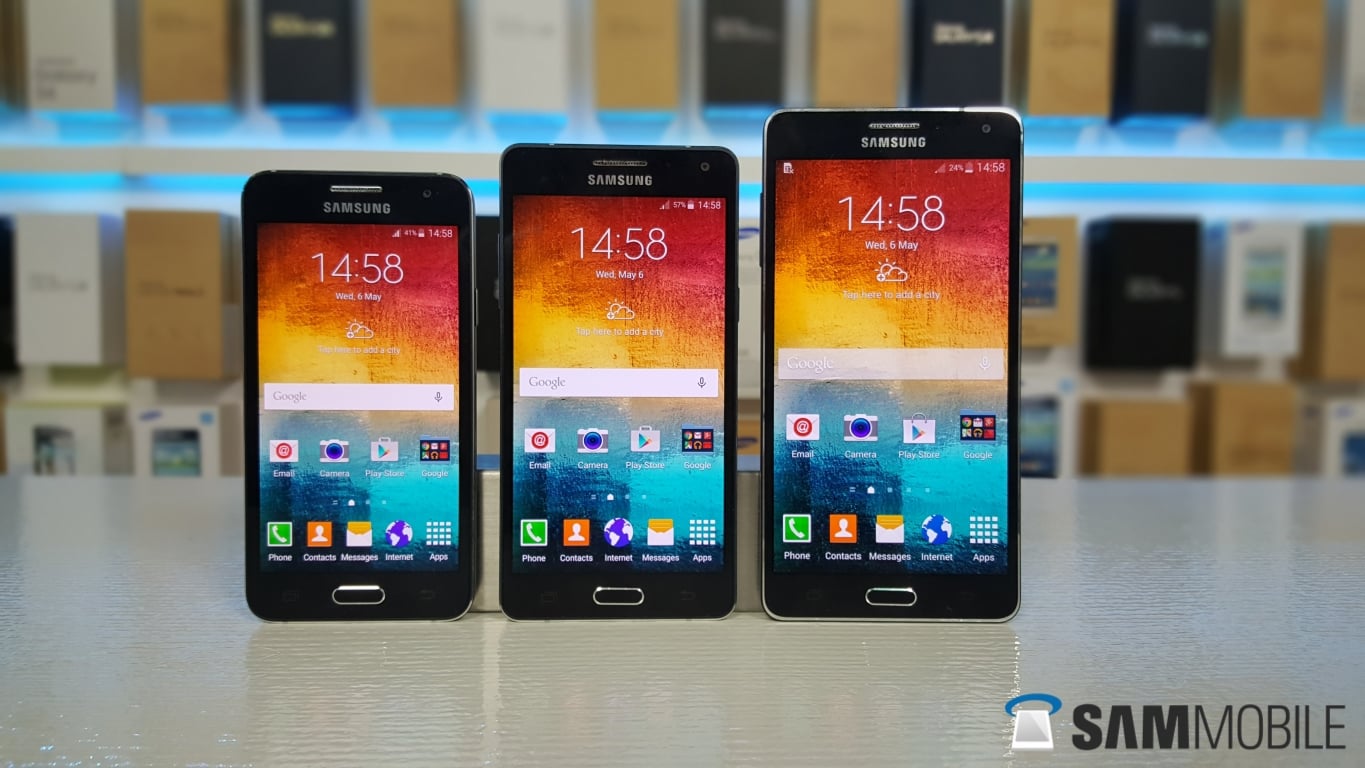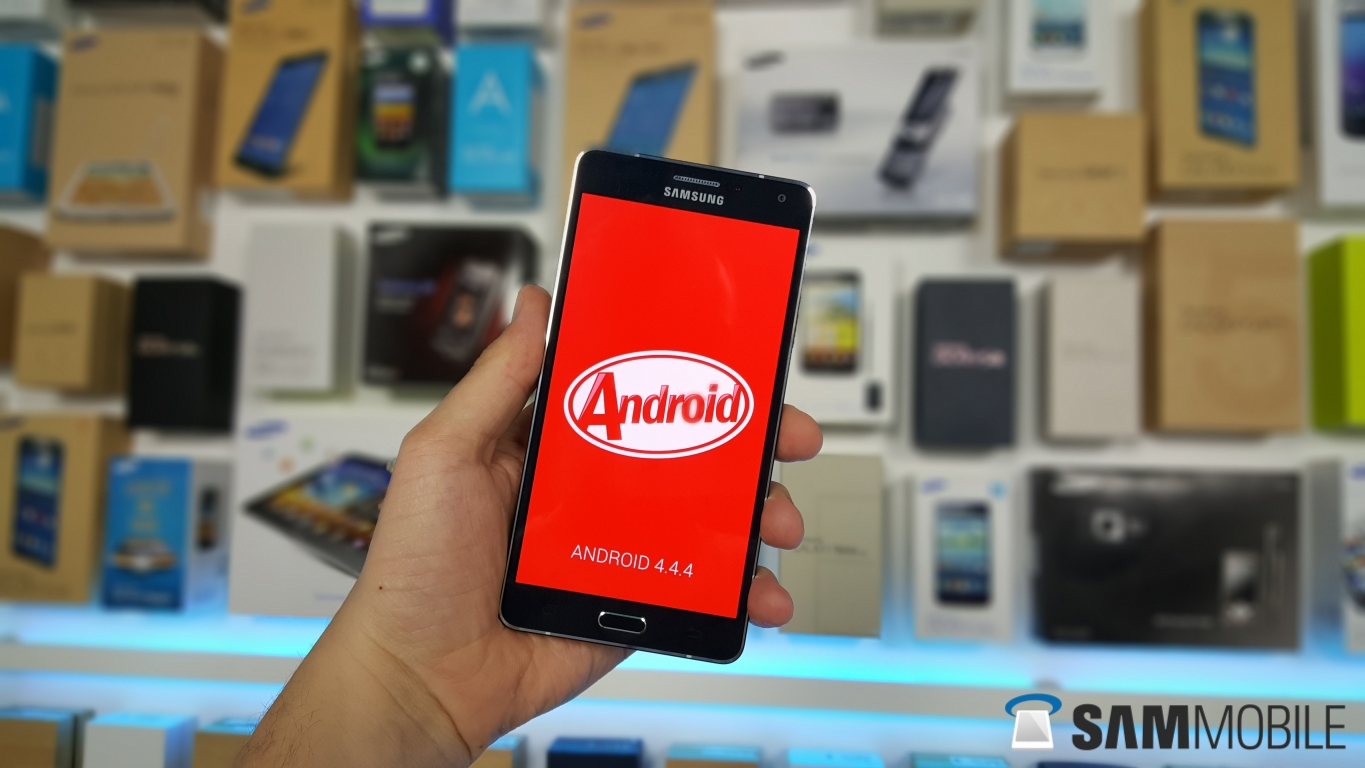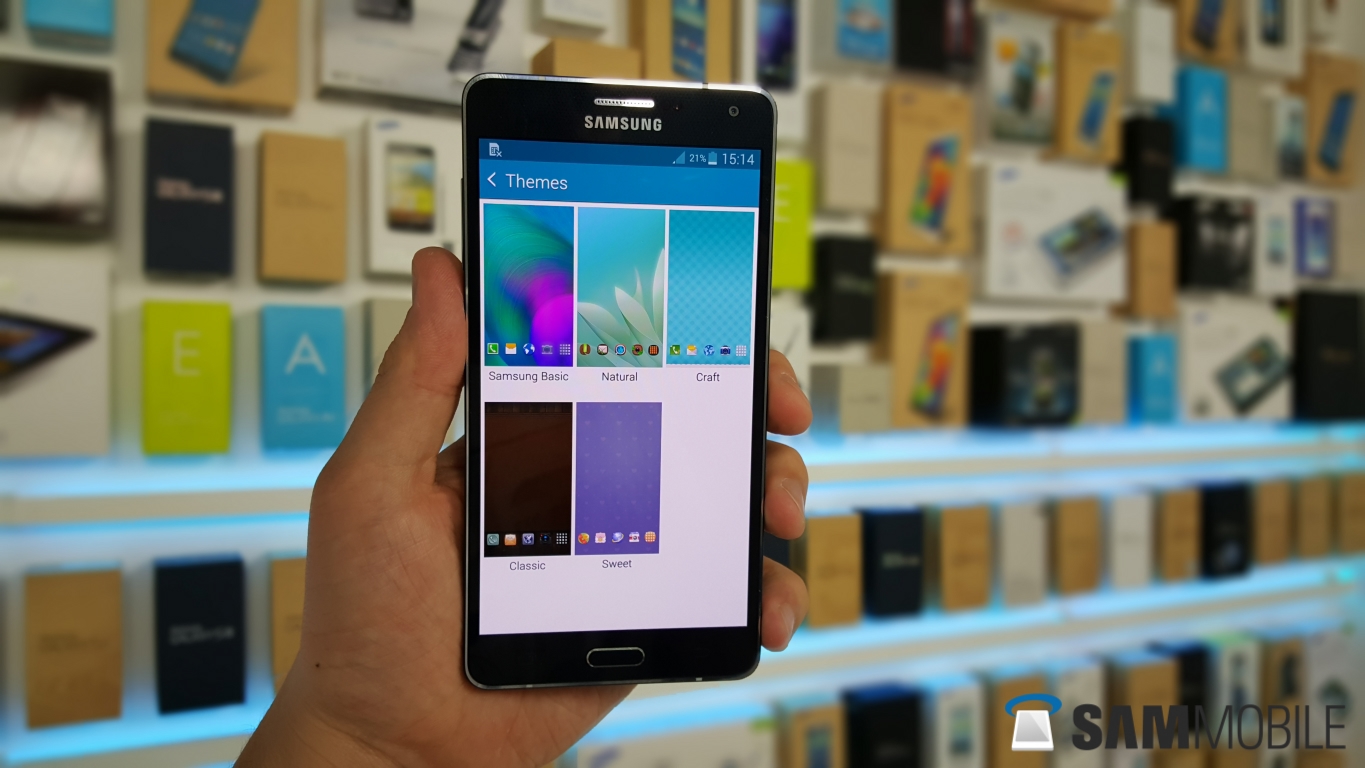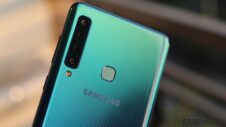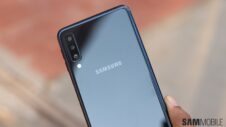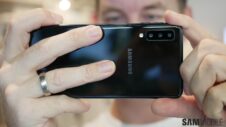Galaxy Core. Galaxy Core. Galaxy Ace. Galaxy Grand. These are just a few of Samsung’s mid-range smartphone lineups, and they aren’t exactly something to write home about. They often lack the proper specifications and build quality, and as a result Samsung has been losing its grip in the mid-range market to companies like Motorola/Lenovo, Huawei, and Xiaomi, which have been offering far more bang for the buck at the same price points as Samsung’s mid-range offerings.
Well, it was time for a big change for the Korean manufacturer, and out came the Galaxy A series. The A series is Samsung’s attempt to take the fight to the OEMs that have been encroaching on its market share, but are these phones really the answer Samsung is looking for?
Let’s dive in and find out in our review of the entire Galaxy A series, which consists of the Galaxy A3, Galaxy A5 and the Galaxy A7.
Design
The A series has a unique look of its own, which is a good thing, as earlier all of Samsung’s various lineups had devices that looked the same. This time around, Samsung is making smartphone lineups that are different from each other – there’s the low-end J series, the real mid-range phones in the A series, and the E series as something in between.
The three Galaxy A devices are very well built, something you feel the moment you pick up one of these devices. Each phone is one solid body thanks to the metal housing and edges. We have the blue versions of these devices, and this color makes the phones look really stylish, something we aren’t used to from Samsung’s mid-range offerings.
Let us talk the basics of what we’re dealing with here.
Like I said earlier, the A series has a unified look to it, and it is easy to recognize them as something different from a distance. The front of these phones all like alike, with only the Galaxy A7 sporting a slightly different look. The Galaxy A7 also lies completely flat on the screen, and it’s the most beautiful of the three phones in my eyes. The Galaxy A7 has a nice metallic border surrounding the screen, something the A3 and A5 are lacking. The A3 and A5 have a chamfered edge on the front and back, and if you look at them from the front, both sport a blue border around the screen. I wonder why Samsung has done this, and it would have been great if all three devices had a unified look with the same design touches.
The front of these devices is covered by the screen for the most part, with a home button at the bottom between back and recent apps touch keys on the right and left respectively. In the upper left corner there is the front-facing camera and various sensors. The traditional Samsung logo is beneath the chrome speaker grill.
The sides have the same color as the color of the phones, and a nice detail of the design is the the chrome colored accent that is visible when you look at the phones from the sides, giving them a premium look. The right side houses two slots, one for the nano SIM and one for the microSD card. It also houses the power button. At the top is a single microphone, and the right side has the volume rockers. At the bottom, there’s a microUSB port and the 3.5 mm headphone jack.
The back looks exactly the same on all three phones, with a protruding camera on all of them. There’s the LED flash on the left of the camera and the loudspeaker on the right, and beneath the camera you get another Samsung logo.
Displays
This year, Samsung is equipping most of its mid-range phones with Super AMOLED technology, and surprisingly, these displays are quite good. The A3 and A5 sport 4.5-inch and 5-inch qHD (540×960) and HD (1280×720) displays respectively, while the Galaxy A7 is fitted with a 5.5-inch display of Full HD resolution (1920×1080). The pixel densities are roughly 245, 294 and 401 on the A3, A5 and A7 – it would have been great if the A5 had a Full HD screen as well, as that would have suited the 5-inch size better.
You can call the viewing experience on these AMOLED panels quite pleasant. They can get bright enough outdoors to let you read on-screen content with ease, and viewing angles are great too, something AMOLED screens traditionally are good at. Unfortunately, the Galaxy A3 has a few pixels visible sometimes; the Galaxy A7 has the best display here, but that is to be expected as it is a Full HD AMOLED panel. Colors on all three phones are vibrant, and the blacks are deep as always.
Unfortunately, the A series has the purple banding issue as well. Purple banding is when you’re viewing black images and scrolling up and down results in a purple smearing beneath/above the black image, as on Super AMOLED displays the individual pixels can’t be turned on that quickly. It’s irritating when you notice, and it’s something Samsung really needs to fix.
Camera
Samsung always delivers on its cameras, which deliver good pictures in daylight and optimum lighting conditions. The problem is low-light situations, which are the culprit on these phones as well.
The Galaxy A3 uses an 8-megapixel camera and with daylight conditions it shoots acceptable pictures. The phone come out with a good amount of detail and not a lot of noise. At night it’s a completely different story. Photos are often unusable, lacking detail and having a lot of noise. The Galaxy A5 and Galaxy A7 are using the same 13-megapixel camera module used on the Galaxy S4, and capture great pictures overall with a lot of sharpness and low noise. In low-light conditions, however, it’s the same story here as well, with pictures often lacking detail and sharpness.
All three phones come with 5-megapixel front-facing cameras, and for front cameras they produce good pictures overall, though the pictures are sometime a little too warm (yellow). The camera interface is the same as any Samsung phone before the Galaxy S6. There’s a shutter button in the middle on the right side, with the camcorder button above the shutter button and the gallery and mode icons below it. At the left side of the viewfinder we have the settings icon, and an icon for toggling the LED flash and the option to switch to the front camera.ED flash or set it to automatic above the flash we see the icon to change to front cam.
Performance/ Software
The Galaxy A3 and A5 are powered by Qualcomm’s Snapdragon 410 chips, which are clocked at 1.2GHz and have four Cortex-A53 cores. The phones run on Android 4.4.4 KitKat out of the box and will be updated to Lollipop. The A3 runs a little smoother than the A5, and the overall experience can be called quite smooth and pleasant.
The Galaxy A7 is powered by Samsung’s own Exynos 5430 processor that was also used on the Galaxy Alpha. The phone runs Android 4.4.4 as well, and there were no hiccups whatsoever in performance, with the overall experience smooth as butter.
The software has the same appearance on all three phones, with the interface the same as the Galaxy Note 4’s. You still have that same blue/green themed notification drawer. Touchwiz her set up is exactly as on any other KitKat phone, you have the homescreens with the clock and on the left you'll have briefing. Briefing is made by Flipboard and it collects information streams of your liking. TouchWiz is still the same old TouchWiz, with a plethora of options like Smart Stay, Multi Window and Ultra Power Saving Mode, to name a few. Ultra Power Saving Mode comes in handy when you are low on battery, just turn it on and the phone goes into low power mode. This means you'll back and white display and the CPU gets scaled down and all background data will be disabled.
Samsung has added support for themes, letting you change icons, wallpapers and your lockscreen. But the limitation here is that there are only a very few themes available and you can’t download more, and it doesn’t look like Samsung will bring the option to do so even with updates.
Call Quality/ Battery
Onl all three phones, call quality wasn’t an issue. I could hear people well and people could hear me clearly as well. What I did notice was that the reception wasn’t that great, but it didn’t interfere with phone calls. It did limit mobile data reception though – where I would have 4G on my Galaxy Note Edge, I would sometimes even have to make do with an Edge connection on the Galaxy A series. This might be due to the metal construction, and overall, there are a few issues with cellular reception that you will have to live with on the A series devices.
The batteries on the Galaxy A3, A5 and A7 could get me through the whole day with ease. That is with moderate usage that includes streaming videos through YouTube, checking ou Twitter a zillion times a day, listening to music, texting, and around 20 minutes of calls. Heavy usage will no doubt bring the battery endurance to lower levels, but you should have no issues with battery life on most days.
Wrap Up
The Galaxy A3, A5 and A7 are great phones that will give you great bang for your buck. In this segment of the market, there aren’t really any phones with the build quality of the A series, and Samsung seems to have listened to the needs of the market. The only thing I dislike here is that none of the phones are sporting a notification LED, something I have gotten quite attached to on other devices. Otherwise, these phones are great – they are fluid, shoot great pictures in daylight, and have attractive AMOLED displays (though with the purple banding issue.)
Samsung hopes to get a foothold in the mid-range market with the Galaxy A series, but only time will tell if these devices are the answer to the company’s goals.
The Good:
- • Premium build
- • Themes
- • Good performance
- • Great Battery Life
The Bad:
- • Data reception not that good
- • Low-light pictures are horrible
The Ugly:
- • Purple banding/smearing
- • No notification LED
